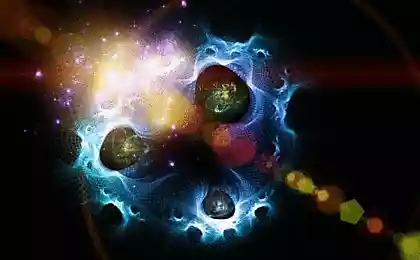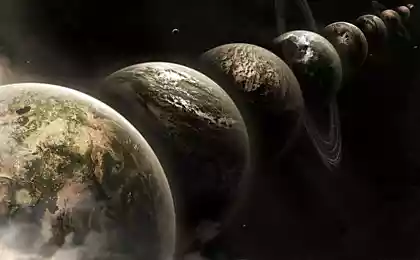309
Insatiable entropy
What do you think we eat for? The standard and, at the same time, completely inaccurate, and even, rather, incorrect answer: we get energy. What's the right one? I'll tell you. But let's start with entropy.
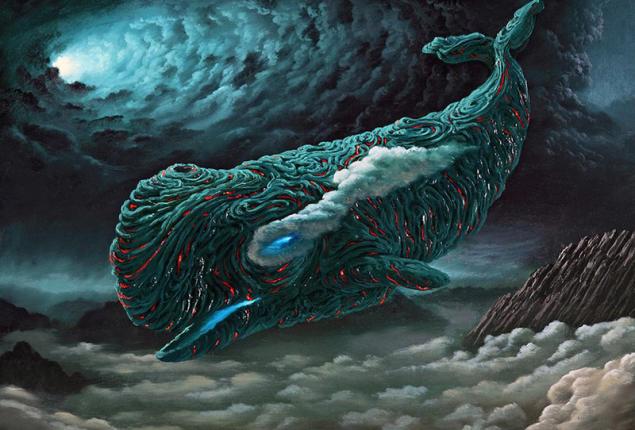
entropy The concept is very complex and multifaceted. It's a kind of squirrel that permeates everything around us and ourselves. And if you try to define what it is, it is a measure of disorder, a measure of chaos. And entropy is born from a completely seemingly harmless household fact: nothing cold can not heat warmer. On the contrary, something hot will heat the cold until there is thermal equilibrium between the two objects. A freshly boiled hot egg is known to cool rather quickly if placed in cold water, but it will heat this water. Both will get warm. The egg can be eaten comfortably, and the water can be poured out if you do not find it some other use: but sooner or later it will still cool down, equal to the air temperature in your kitchen. Everything described above in physics is called the second law of thermodynamics. This second principle does not follow from anything. It is not the result of any great theories, nor does it follow from sophisticated theorems. It's just an observable fact. We postulate that this is so because no one in our world has ever seen the cold warm the hotter.

And entropy is a consequence of that fact. Maximum entropy (chaos) in the system (egg, cold water and air in your kitchen) will occur when the system is in thermodynamic equilibrium, i.e. the temperature of the egg, water and the surrounding air is equal. Unless you eat the egg warm, of course. It would seem that when everything is balanced, then there comes complete order. Ahn no. It's the opposite. And this is due to the internal microstate of the system, its molecular level.
Imagine all those myriad molecules that make up the air in your kitchen. They are completely random, chaotically rushing around its entire volume, colliding and constantly changing direction. And the higher the temperature (the summer heat is worth, and you never put the air conditioner), the faster and, therefore, more chaotic these molecules rush around you. Hence the first conclusion: the higher the temperature of the system, the higher the measure of its chaos, that is, entropy. But look at the same air in your kitchen from the other side. Strange as it may seem, it is due to the randomness and randomness of movements of air molecules that they are not concentrated in one corner, but rather evenly distributed throughout its volume. If the air had behaved differently, we would have to run after it, trying before each breath to determine in which corner it is this time stuck. But, thank goodness, air molecules normally behave in the most predictable, most likely way: like any gas, air will occupy the entire volume that will be offered to it. The kitchen is like the kitchen, the entire air basin of the Earth is like the entire air basin (it doesn’t fly out into space because of gravity).

It's not some high-entropy air in your kitchen. This is low entropy air, "driven" into a jar. You might wonder why it is so expensive...
And vice versa. If we want to drive air into any corner of our kitchen, we need a lot of ingenuity, energy and energy to do it. Obviously, we will need some sealed partition, a sufficiently powerful pump, some kind of power plant to power this pump, etc. In other words, to get the air to behave in an organized way, we need to do a lot of work. That's the only way we're going to get him to disrupt his most likely behavior and gather in the corner we like. And in doing so, we reduce the measure of its disorder: the entropy of the system decreases. It follows that the less likely the microstate of the system becomes, the lower the entropy of this system, that is, the measure of its disorder. And vice versa. And since thermodynamic equilibrium is the most probable state of any closed system, it is the most highly entropic state.
To some, this story may seem abstract, not too significant: what do we care about the microstates of some systems there, even if it concerns the egg we are going to eat for breakfast. It is unlikely that the fact that the egg will come into thermodynamic equilibrium with cold water, with which we poured it specifically to cool it a little, will spoil our appetite. And the air, thank God, behaves in the most appropriate, most probable and expected way. But unfortunately, these are not distracted conversations. Entropy is that everything in this world and this world itself leads to death.
572374
There is a law of non-decreasing entropy. In fact, we can safely say that this is the law of the constant increase of entropy. Non-decreasing refers to systems that have reached their thermodynamic equilibrium, that is, their maximum entropy. In all other cases, it is solely a question of increasing entropy. What will happen to our eggs, water, and air in the kitchen (I’m afraid you’ve had enough of them, but soon we’ll leave them alone) when they reach their temperature equilibrium? If we consider them to be a closed system, that is, if we isolate them from the outside world, then this system will eventually come to a complete rest, there will cease any processes. It will be the peace of death, eternal peace. The exception, however, will be various quantum effects associated with the uncertainty principle, but here we will leave them out of brackets so as not to get confused. It is because of entropy that it is impossible to create a perpetual motion machine, because the evolution of any closed system must end in complete rest.

Ours. universe This is probably a closed system. At least, that’s what most scientists think: there’s no scientific evidence that anything came from outside. Every closed system tends to thermodynamic equilibrium. The fact that the entropy of our universe is constantly growing is an undeniable fact. When physicists estimated the entropy of the background radiation left over from the Big Bang, which permeates the entire universe, they were, in their own words, stunned. The King's new mind. And until relatively recently, the most likely scenario for the death of the universe was so-called thermal death, that is, the universe had, as it seemed then, to complete its journey, reaching thermodynamic equilibrium at a temperature close to absolute zero. Simply put, freeze.
But when the entropy of black holes was estimated, it became obvious that it, and therefore the entropy of the entire universe, is many orders of magnitude larger than one could imagine. The equilibrium point of our universe as a system should be the equilibrium of a supermassive black hole. There is no scientifically based optimistic scenario for the evolution of our world: its demise is inevitable.
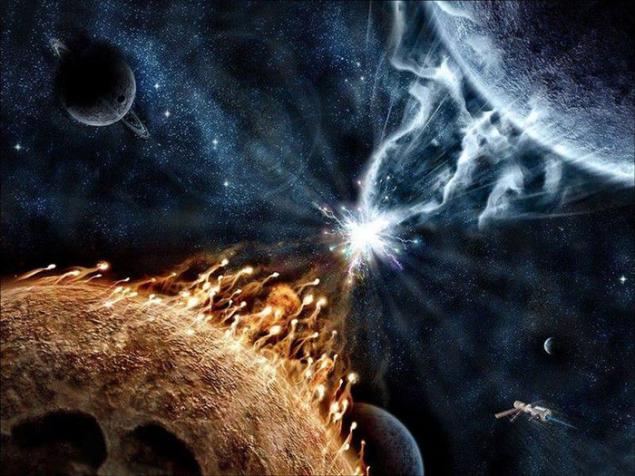
The world we see around us is doomed because it is based on the principle of a constant striving for self-destruction: a maximum of disorder and an energy minimum. Every field tries to shed excess energy by forming a quantum; every excited electron at any opportunity gives an extra photon to descend to a lower energy level; every stone at the first opportunity is ready to roll down the mountain to get rid of excess potential energy.
From the point of view of modern scientific knowledge, the very birth of the Universe, the formation of stars and planets (in general, matter), the birth of life, the formation of consciousness looks completely unnatural for our world. All these phenomena are clearly the opposite of the mainstream evolution of the world. Of course, locally, in individual corners of the universe, negentropy may prevail (this term denotes negative entropy, that is, a measure of the opposite process - reducing disorder; a little later we will see that negentropy is almost always identical with such a concept as information). But the price of this is the growth of entropy around such exceptional corners.
So why are we eating? In order to get the energy needed by a person, a summer sun or a bourgeois stove in the cold is enough. And for many of us, we don't need that either: mass is proportional to energy. Have you been weighing yourself? Each person gives to the surrounding space about the same amount of heat energy as receives from the outside. And if he received more than he gave, he would increase in size (which is what happens to many of us). But remember how much energy (!) our body spends to get rid of excess heat (high entropy) energy in the heat: increased sweat glands, dilated vessels, rapid breathing and heartbeat...
In fact, with food, we get negentropy first. Man is a very highly organized creature, that is, sorry for the expression, a creature of low entropy. To maintain this state, it needs a source of this lowest entropy. Such a source for us are plants that have learned photosynthesis and are able to create organic (complex and unlikely, and therefore low entropy) substances under the influence of sunlight. The visible spectrum of light is a relatively low entropy form of radiation. It is used by plants (and some microorganisms) to separate atmospheric carbon dioxide into oxygen and carbon and then form their complex organic structure. At the same time, they radiate heat into the surrounding space, it is also high entropy, infrared radiation.
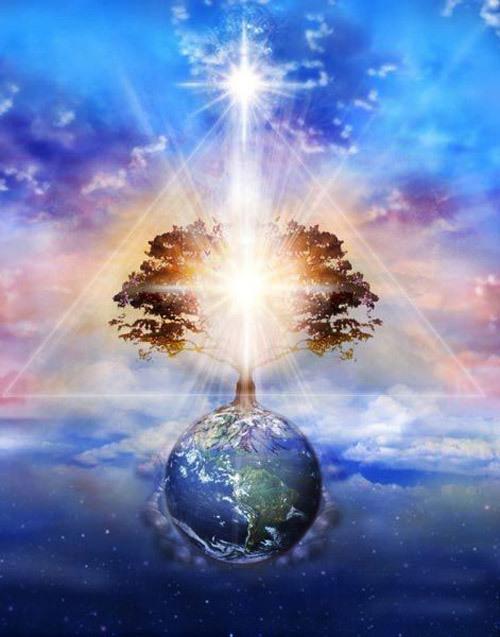
We eat plants directly, as well as indirectly, by eating meat, fish, and other animal products (it is clear that those we eat have, until recently, eaten plants or those who ate plants). And thus we get complex organic compounds, from which we build ourselves, including our complex (low-entropy) energy system. And in the outside, again, we release heat and relatively high entropy carbon dioxide when breathing. If animals, including humans, were capable of photosynthesis themselves, then food at a comfortable ambient temperature would probably not be required at all. Except mineral fertilizers. What a water, of course. I do not know about you, for some reason I am not very pleased with such a hypothetical possibility: either I like to eat too much, or I am arrogant about plants and do not want to resemble them. Both are probably not very good. But one thing is clear: the division of labor is expedient not only in human society, but also in living nature as a whole.
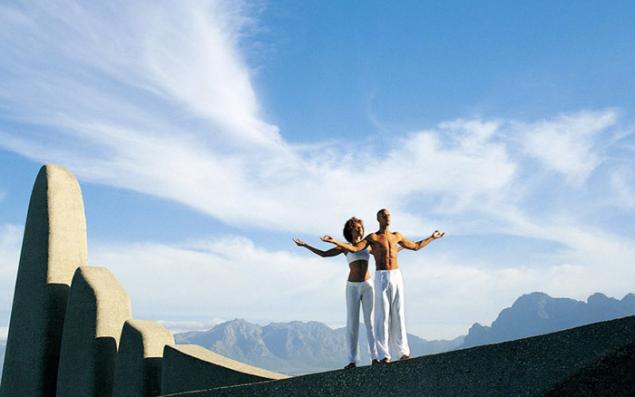
So we had lunch...
Because of this local heterogeneity in our corner of the universe, which is the radiant Sun, in our sky we have a free source of low entropy, ordered radiation. It is possible for life to exist on our planet. But, receiving sunlight, we, the Earth and all its inhabitants combined, as a "gratitude" redirect to cold space, primarily high entropy, chaotic thermal radiation. So the entropy of the whole system, our universe, is growing. It's not space. I'm even afraid to stutter about the incredible amount of entropy that humans, creatures thought to be intelligent, produce around themselves: in their own environment. The price for the products of all our high (and not too high) technologies, and these products are also a very highly organized form of matter, is the very pollution that has already become a direct threat to the existence of humanity itself.
Entropy has not only conquered matter and energy. She's mastered time itself. All the fundamental equations of physics that describe our world are symmetrical in time. The future and the past, from the point of view of physics, are absolutely equal. And in classical mechanics, and in quantum, and in Maxwell’s wave equations, and in the theory of relativity, everywhere (there is one exception, which applies to nuclear physics, the so-called weak interaction, but what follows from this exception, the nuclear scientists themselves do not yet understand). The left side of the equation is equal to the right side. In other words, time would not have to have any direction: from the past to the future, from the future to the past – it does not matter. If it weren't for entropy!

A classic example that physicists use to show the uninitiated how time has a direction or, as it is called, the arrow of time. A cup of tea on the table. There she is. She's accidentally slapped, she falls around the shard, the tea spreads across the floor. The picture is seen by all of us and more than once. But no one has ever seen the opposite, apart from rewinding the video or the film back: for the fragments to reassemble into a whole cup, tea climbed into it, and the cup jumped easily onto the table. But from a physics perspective, the energy that a cup gets when it falls and hits a floor will be exactly the same as the energy needed to get all the pieces and tea together and jump back on the table. The law of conservation of energy works in full here. So what's stopping you from doing that? Another law arising from the second law of thermodynamics is the law of non-decreasing entropy.
The fact is that the energy received by the cup during the fall, mostly transferred to heat. Atoms of splinters and tea after hitting the floor (which also warmed slightly) began to move a little faster, more chaotic. So the entropy of the system has increased. And to bring them back to their former, more organized state, would require an incredibly precise reversal of these atoms, which is probably impossible. Not to mention that some of the resulting heat will immediately dissipate in the surrounding space. Of course, if you remember the laws of quantum mechanics, you can still hope that out of all the billions, billions, billions of cups, glasses, glasses, glasses, plates, bowls, bowls, etc. that have fallen from tables in the history of mankind, at least one (or one) gathered itself and still jumped to its original place. But honestly, would you believe the witnesses to this incident? At best, decide that these witnesses had pre-drinked too much of the contents of their cups, glasses, glasses, and glasses, and that they were not tea at all. The laws of physics do not prohibit such events. But they are very rare, and therefore we refer them at best to miracles, and at worst to hallucinations.

We don't see fried eggs gathering back into fresh eggs, fireplace ashes turning back into logs, bits of sugar jumping out of hot coffee right into the hand of whoever put them there. Time only flows in one direction for us. And entropy directs it, and it's the only one. And this direction, as we found above, is rather gloomy: to destruction and death. Usually, as we grow up a little, we begin to notice this in ourselves and look around. But in vain we say that time is inexorable. Inexorable, actually, is entropy.
And here I would like to return to the concept of singularity, which we discussed in the previous article. We have examined in relative detail what the ultimate singularities (or finite singularities) of this world will be. This singularity of a black hole is the highest entropy system known to mankind. But the same picture suggests that our world must have been very orderly in the beginning. The initial singularity that gave rise to the Big Bang must have been unusually low entropy, because in the world we observe, entropy is constantly increasing, so it was once low or zero. Today’s cosmology is a space of unsolved mysteries and unsolved mysteries. But the mystery of the initial state of the world is perhaps the greatest.
Roger Penrose estimated the amount of entropy for the final collapse of our universe: 1010123! Hence, through the concept of phase volume (phase space is the set of all states of the system at a particular time). In phase space, the state of the system is described by the coordinates of one point, and the entire evolution of the system is described by the movement of this point. Penrose concludes that there is a probability of a world in which the second law of thermodynamics as we know it would be observed.
This value indicates how accurate the Creator’s design must have been: the accuracy was about 1010123! This is amazing accuracy. Such a figure cannot even be written out completely in the ordinary decimal system: it would be 1 followed by 10123 zeros! Even if we were able to write "0" on every proton and every neutron in the universe, and use all the other particles for this purpose, our number would still remain unwritten. (R. Penrose). The King's new mind
Note that the probabilities below 1/1050 are considered zero by mathematicians and are not taken into account in calculations, and this number, written in the decimal system, easily fits into one line of a standard sheet of writing paper.

The unthinkable number given by Penrose (and I want to make it my own name and write with a capital letter - Number), according to him, is very approximate, the least accuracy that was required for the Big Bang organization, which gave birth to the world we observe. At the same time, the ultimate singularity of the universe, exemplified by the singularity of black holes, as we said above, must be completely chaotic. The material world is going to death. But it was made for life! And I hope to talk about that later. published
P.S. And remember, just changing our consumption – together we change the world!
Source: www.cablook.com/universe/nenasitnaya-entropiya/

entropy The concept is very complex and multifaceted. It's a kind of squirrel that permeates everything around us and ourselves. And if you try to define what it is, it is a measure of disorder, a measure of chaos. And entropy is born from a completely seemingly harmless household fact: nothing cold can not heat warmer. On the contrary, something hot will heat the cold until there is thermal equilibrium between the two objects. A freshly boiled hot egg is known to cool rather quickly if placed in cold water, but it will heat this water. Both will get warm. The egg can be eaten comfortably, and the water can be poured out if you do not find it some other use: but sooner or later it will still cool down, equal to the air temperature in your kitchen. Everything described above in physics is called the second law of thermodynamics. This second principle does not follow from anything. It is not the result of any great theories, nor does it follow from sophisticated theorems. It's just an observable fact. We postulate that this is so because no one in our world has ever seen the cold warm the hotter.

And entropy is a consequence of that fact. Maximum entropy (chaos) in the system (egg, cold water and air in your kitchen) will occur when the system is in thermodynamic equilibrium, i.e. the temperature of the egg, water and the surrounding air is equal. Unless you eat the egg warm, of course. It would seem that when everything is balanced, then there comes complete order. Ahn no. It's the opposite. And this is due to the internal microstate of the system, its molecular level.
Imagine all those myriad molecules that make up the air in your kitchen. They are completely random, chaotically rushing around its entire volume, colliding and constantly changing direction. And the higher the temperature (the summer heat is worth, and you never put the air conditioner), the faster and, therefore, more chaotic these molecules rush around you. Hence the first conclusion: the higher the temperature of the system, the higher the measure of its chaos, that is, entropy. But look at the same air in your kitchen from the other side. Strange as it may seem, it is due to the randomness and randomness of movements of air molecules that they are not concentrated in one corner, but rather evenly distributed throughout its volume. If the air had behaved differently, we would have to run after it, trying before each breath to determine in which corner it is this time stuck. But, thank goodness, air molecules normally behave in the most predictable, most likely way: like any gas, air will occupy the entire volume that will be offered to it. The kitchen is like the kitchen, the entire air basin of the Earth is like the entire air basin (it doesn’t fly out into space because of gravity).

It's not some high-entropy air in your kitchen. This is low entropy air, "driven" into a jar. You might wonder why it is so expensive...
And vice versa. If we want to drive air into any corner of our kitchen, we need a lot of ingenuity, energy and energy to do it. Obviously, we will need some sealed partition, a sufficiently powerful pump, some kind of power plant to power this pump, etc. In other words, to get the air to behave in an organized way, we need to do a lot of work. That's the only way we're going to get him to disrupt his most likely behavior and gather in the corner we like. And in doing so, we reduce the measure of its disorder: the entropy of the system decreases. It follows that the less likely the microstate of the system becomes, the lower the entropy of this system, that is, the measure of its disorder. And vice versa. And since thermodynamic equilibrium is the most probable state of any closed system, it is the most highly entropic state.
To some, this story may seem abstract, not too significant: what do we care about the microstates of some systems there, even if it concerns the egg we are going to eat for breakfast. It is unlikely that the fact that the egg will come into thermodynamic equilibrium with cold water, with which we poured it specifically to cool it a little, will spoil our appetite. And the air, thank God, behaves in the most appropriate, most probable and expected way. But unfortunately, these are not distracted conversations. Entropy is that everything in this world and this world itself leads to death.
572374
There is a law of non-decreasing entropy. In fact, we can safely say that this is the law of the constant increase of entropy. Non-decreasing refers to systems that have reached their thermodynamic equilibrium, that is, their maximum entropy. In all other cases, it is solely a question of increasing entropy. What will happen to our eggs, water, and air in the kitchen (I’m afraid you’ve had enough of them, but soon we’ll leave them alone) when they reach their temperature equilibrium? If we consider them to be a closed system, that is, if we isolate them from the outside world, then this system will eventually come to a complete rest, there will cease any processes. It will be the peace of death, eternal peace. The exception, however, will be various quantum effects associated with the uncertainty principle, but here we will leave them out of brackets so as not to get confused. It is because of entropy that it is impossible to create a perpetual motion machine, because the evolution of any closed system must end in complete rest.

Ours. universe This is probably a closed system. At least, that’s what most scientists think: there’s no scientific evidence that anything came from outside. Every closed system tends to thermodynamic equilibrium. The fact that the entropy of our universe is constantly growing is an undeniable fact. When physicists estimated the entropy of the background radiation left over from the Big Bang, which permeates the entire universe, they were, in their own words, stunned. The King's new mind. And until relatively recently, the most likely scenario for the death of the universe was so-called thermal death, that is, the universe had, as it seemed then, to complete its journey, reaching thermodynamic equilibrium at a temperature close to absolute zero. Simply put, freeze.
But when the entropy of black holes was estimated, it became obvious that it, and therefore the entropy of the entire universe, is many orders of magnitude larger than one could imagine. The equilibrium point of our universe as a system should be the equilibrium of a supermassive black hole. There is no scientifically based optimistic scenario for the evolution of our world: its demise is inevitable.

The world we see around us is doomed because it is based on the principle of a constant striving for self-destruction: a maximum of disorder and an energy minimum. Every field tries to shed excess energy by forming a quantum; every excited electron at any opportunity gives an extra photon to descend to a lower energy level; every stone at the first opportunity is ready to roll down the mountain to get rid of excess potential energy.
From the point of view of modern scientific knowledge, the very birth of the Universe, the formation of stars and planets (in general, matter), the birth of life, the formation of consciousness looks completely unnatural for our world. All these phenomena are clearly the opposite of the mainstream evolution of the world. Of course, locally, in individual corners of the universe, negentropy may prevail (this term denotes negative entropy, that is, a measure of the opposite process - reducing disorder; a little later we will see that negentropy is almost always identical with such a concept as information). But the price of this is the growth of entropy around such exceptional corners.
So why are we eating? In order to get the energy needed by a person, a summer sun or a bourgeois stove in the cold is enough. And for many of us, we don't need that either: mass is proportional to energy. Have you been weighing yourself? Each person gives to the surrounding space about the same amount of heat energy as receives from the outside. And if he received more than he gave, he would increase in size (which is what happens to many of us). But remember how much energy (!) our body spends to get rid of excess heat (high entropy) energy in the heat: increased sweat glands, dilated vessels, rapid breathing and heartbeat...
In fact, with food, we get negentropy first. Man is a very highly organized creature, that is, sorry for the expression, a creature of low entropy. To maintain this state, it needs a source of this lowest entropy. Such a source for us are plants that have learned photosynthesis and are able to create organic (complex and unlikely, and therefore low entropy) substances under the influence of sunlight. The visible spectrum of light is a relatively low entropy form of radiation. It is used by plants (and some microorganisms) to separate atmospheric carbon dioxide into oxygen and carbon and then form their complex organic structure. At the same time, they radiate heat into the surrounding space, it is also high entropy, infrared radiation.

We eat plants directly, as well as indirectly, by eating meat, fish, and other animal products (it is clear that those we eat have, until recently, eaten plants or those who ate plants). And thus we get complex organic compounds, from which we build ourselves, including our complex (low-entropy) energy system. And in the outside, again, we release heat and relatively high entropy carbon dioxide when breathing. If animals, including humans, were capable of photosynthesis themselves, then food at a comfortable ambient temperature would probably not be required at all. Except mineral fertilizers. What a water, of course. I do not know about you, for some reason I am not very pleased with such a hypothetical possibility: either I like to eat too much, or I am arrogant about plants and do not want to resemble them. Both are probably not very good. But one thing is clear: the division of labor is expedient not only in human society, but also in living nature as a whole.

So we had lunch...
Because of this local heterogeneity in our corner of the universe, which is the radiant Sun, in our sky we have a free source of low entropy, ordered radiation. It is possible for life to exist on our planet. But, receiving sunlight, we, the Earth and all its inhabitants combined, as a "gratitude" redirect to cold space, primarily high entropy, chaotic thermal radiation. So the entropy of the whole system, our universe, is growing. It's not space. I'm even afraid to stutter about the incredible amount of entropy that humans, creatures thought to be intelligent, produce around themselves: in their own environment. The price for the products of all our high (and not too high) technologies, and these products are also a very highly organized form of matter, is the very pollution that has already become a direct threat to the existence of humanity itself.
Entropy has not only conquered matter and energy. She's mastered time itself. All the fundamental equations of physics that describe our world are symmetrical in time. The future and the past, from the point of view of physics, are absolutely equal. And in classical mechanics, and in quantum, and in Maxwell’s wave equations, and in the theory of relativity, everywhere (there is one exception, which applies to nuclear physics, the so-called weak interaction, but what follows from this exception, the nuclear scientists themselves do not yet understand). The left side of the equation is equal to the right side. In other words, time would not have to have any direction: from the past to the future, from the future to the past – it does not matter. If it weren't for entropy!

A classic example that physicists use to show the uninitiated how time has a direction or, as it is called, the arrow of time. A cup of tea on the table. There she is. She's accidentally slapped, she falls around the shard, the tea spreads across the floor. The picture is seen by all of us and more than once. But no one has ever seen the opposite, apart from rewinding the video or the film back: for the fragments to reassemble into a whole cup, tea climbed into it, and the cup jumped easily onto the table. But from a physics perspective, the energy that a cup gets when it falls and hits a floor will be exactly the same as the energy needed to get all the pieces and tea together and jump back on the table. The law of conservation of energy works in full here. So what's stopping you from doing that? Another law arising from the second law of thermodynamics is the law of non-decreasing entropy.
The fact is that the energy received by the cup during the fall, mostly transferred to heat. Atoms of splinters and tea after hitting the floor (which also warmed slightly) began to move a little faster, more chaotic. So the entropy of the system has increased. And to bring them back to their former, more organized state, would require an incredibly precise reversal of these atoms, which is probably impossible. Not to mention that some of the resulting heat will immediately dissipate in the surrounding space. Of course, if you remember the laws of quantum mechanics, you can still hope that out of all the billions, billions, billions of cups, glasses, glasses, glasses, plates, bowls, bowls, etc. that have fallen from tables in the history of mankind, at least one (or one) gathered itself and still jumped to its original place. But honestly, would you believe the witnesses to this incident? At best, decide that these witnesses had pre-drinked too much of the contents of their cups, glasses, glasses, and glasses, and that they were not tea at all. The laws of physics do not prohibit such events. But they are very rare, and therefore we refer them at best to miracles, and at worst to hallucinations.

We don't see fried eggs gathering back into fresh eggs, fireplace ashes turning back into logs, bits of sugar jumping out of hot coffee right into the hand of whoever put them there. Time only flows in one direction for us. And entropy directs it, and it's the only one. And this direction, as we found above, is rather gloomy: to destruction and death. Usually, as we grow up a little, we begin to notice this in ourselves and look around. But in vain we say that time is inexorable. Inexorable, actually, is entropy.
And here I would like to return to the concept of singularity, which we discussed in the previous article. We have examined in relative detail what the ultimate singularities (or finite singularities) of this world will be. This singularity of a black hole is the highest entropy system known to mankind. But the same picture suggests that our world must have been very orderly in the beginning. The initial singularity that gave rise to the Big Bang must have been unusually low entropy, because in the world we observe, entropy is constantly increasing, so it was once low or zero. Today’s cosmology is a space of unsolved mysteries and unsolved mysteries. But the mystery of the initial state of the world is perhaps the greatest.
Roger Penrose estimated the amount of entropy for the final collapse of our universe: 1010123! Hence, through the concept of phase volume (phase space is the set of all states of the system at a particular time). In phase space, the state of the system is described by the coordinates of one point, and the entire evolution of the system is described by the movement of this point. Penrose concludes that there is a probability of a world in which the second law of thermodynamics as we know it would be observed.
This value indicates how accurate the Creator’s design must have been: the accuracy was about 1010123! This is amazing accuracy. Such a figure cannot even be written out completely in the ordinary decimal system: it would be 1 followed by 10123 zeros! Even if we were able to write "0" on every proton and every neutron in the universe, and use all the other particles for this purpose, our number would still remain unwritten. (R. Penrose). The King's new mind
Note that the probabilities below 1/1050 are considered zero by mathematicians and are not taken into account in calculations, and this number, written in the decimal system, easily fits into one line of a standard sheet of writing paper.

The unthinkable number given by Penrose (and I want to make it my own name and write with a capital letter - Number), according to him, is very approximate, the least accuracy that was required for the Big Bang organization, which gave birth to the world we observe. At the same time, the ultimate singularity of the universe, exemplified by the singularity of black holes, as we said above, must be completely chaotic. The material world is going to death. But it was made for life! And I hope to talk about that later. published
P.S. And remember, just changing our consumption – together we change the world!
Source: www.cablook.com/universe/nenasitnaya-entropiya/
ASTON MARTIN plans to issue 800-horsepower electric car
New Zealand close the last coal-fired units in 2018






